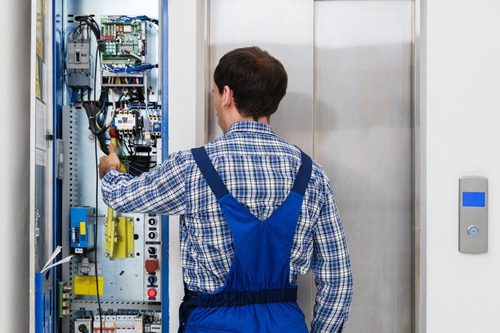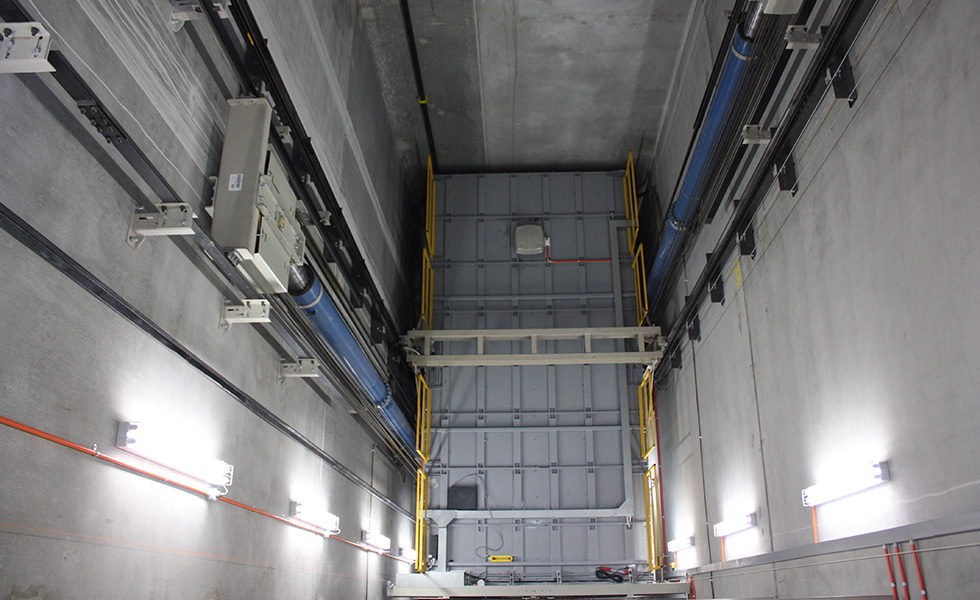Leading Lift Repair Companies Near Me for Dependable Maintenance Services
Leading Lift Repair Companies Near Me for Dependable Maintenance Services
Blog Article
Comprehensive Guide to Elevator Equipments and Their Upkeep
Navigating the elaborate world of lift systems and their upkeep is a task that requires precision and expertise. From the numerous types of elevator systems in usage to the precise adherence to safety and security laws, the upkeep of these vertical transport tools is a multifaceted endeavor.
Kinds Of Lift Equipments
Elevator systems been available in numerous types, each made to match certain structure requirements and user needs. One of the most common kinds include hydraulic lifts, traction elevators, machine-room-less elevators, and vacuum cleaner lifts. Hydraulic lifts are suitable for low-rise structures and utilize a hydraulic piston to move the elevator auto. Traction elevators, on the other hand, are extra fit for skyscrapers and use steel ropes and weights to relocate the cars and truck. Machine-room-less lifts are a space-saving choice as they do not require a different maker area for the lift machinery. Vacuum cleaner lifts, an extra contemporary technology, usage air pressure differentials to move the vehicle within a transparent tube.
Each kind of elevator system has its very own benefits and downsides, making it important for building proprietors and programmers to meticulously consider their certain demands before choosing one of the most appropriate option. Factors such as building elevation, room schedule, power efficiency, and budget plan constraints all play a substantial duty in establishing the most effective lift system for a particular structure.
Typical Maintenance Concerns
Routine maintenance of elevator systems is necessary to make certain smooth operation and prolong their lifespan. Regardless of normal upkeep, lift systems can still run into usual upkeep problems that need to be promptly resolved to stop interruptions in solution. Routine evaluations and proactive upkeep can assist identify and fix these usual maintenance problems before they escalate and affect the overall performance of the elevator system.
Security Rules and Compliance
Following strict security regulations and guaranteeing conformity with market requirements are extremely important for keeping the operational integrity of elevator systems. Elevators go through a detailed set of safety and security laws to protect travelers, maintenance employees, and the basic public. Governing bodies such as the Occupational Security and Wellness Management (OSHA) in the United States and the European Lift Association (ELA) in Europe develop guidelines that cover various aspects of lift layout, maintenance, operation, and installment.
Conformity with these laws is not only a lawful demand but also an ethical responsibility for structure proprietors and lift maintenance companies. Failure to meet safety and security requirements can cause penalties, lawful obligations, and, most notably, threaten the security of individuals using the elevator. have a peek at these guys Routine evaluations, upkeep checks, and adherence to security methods detailed in the laws are vital to ensure the reliable and risk-free procedure of lift systems. By prioritizing safety and security laws and compliance, stakeholders can promote the trust fund of the general public and alleviate possible dangers linked with elevator usage.
Ideal Practices for Upkeep

One more crucial best technique is to promptly deal with any reported problems or uncommon sounds to avoid additional damages. Applying a positive approach to maintenance can conserve money and time in the future by staying clear of expensive fixings or substitutes. Building owners need to additionally take into consideration spending in modernization upgrades to enhance the efficiency and security of their lift systems. By complying with these ideal practices, elevator systems can operate efficiently and safely, providing trustworthy vertical transportation for owners.

Advanced Technologies for Performance
Applying innovative modern technologies in lift systems can significantly enhance functional performance and passenger experience. These systems allow travelers to input their desired floor before getting in the lift, which after that guides them to the most efficient vehicle.
Additionally, the assimilation of wise sensing units and anticipating upkeep capabilities has actually reinvented lift maintenance. These sensors can identify potential concerns before they rise, making it possible for proactive maintenance treatments and lessening downtime. In addition, making use of energy-efficient elements and regenerative drives helps reduce power usage and operating expenses in elevator systems.
Furthermore, the execution of cloud-based tracking and remote diagnostics enables real-time tracking of lift performance and prompt troubleshooting of any breakdowns. home This positive technique not only enhances system reliability yet additionally boosts the total customer experience by making certain nonstop and smooth lift operations.
Conclusion
Finally, comprehending the various sorts of lift systems, typical upkeep concerns, security guidelines, ideal maintenance methods, and advanced innovations for efficiency is vital for ensuring the smooth procedure of elevators. By adhering to safety and security laws and implementing finest methods for maintenance, building proprietors can extend the life expectancy of their elevator systems and ensure the safety of guests. It is necessary to remain updated on the most recent advancements in elevator modern technology to improve efficiency and integrity.
The most usual types include hydraulic lifts, grip elevators, machine-room-less elevators, and vacuum cleaner elevators. Hydraulic elevators are perfect for low-rise structures and utilize a hydraulic piston to relocate the elevator automobile. Machine-room-less elevators are a space-saving alternative as they do not require a separate machine room for the lift machinery. Normal inspections and positive upkeep can help determine and deal with these common upkeep more information problems before they escalate and influence the total efficiency of the lift system.

Report this page